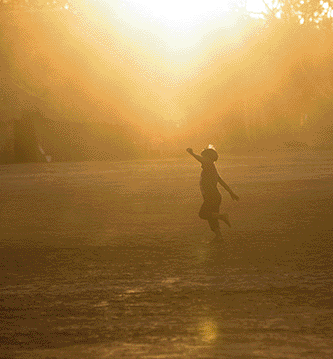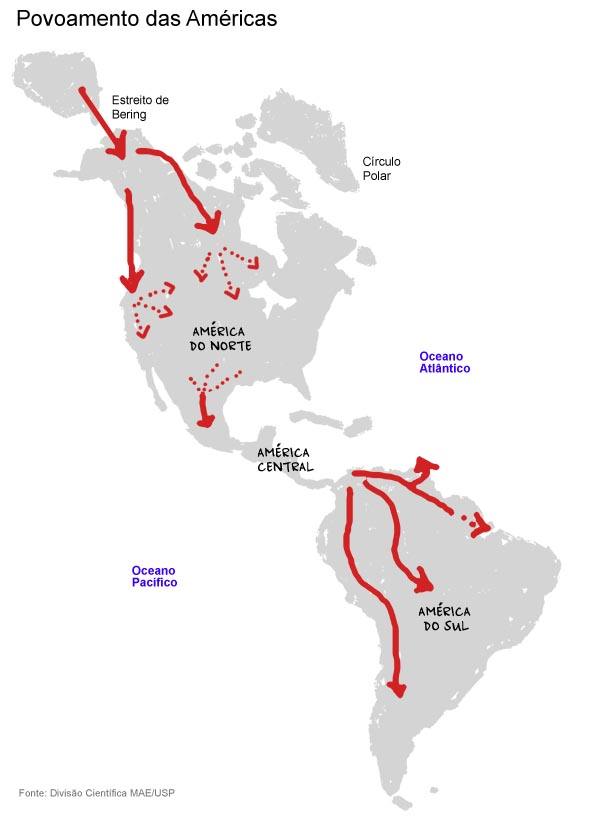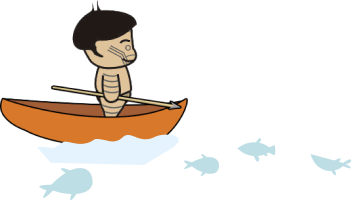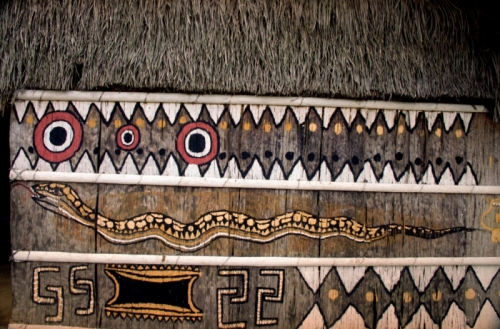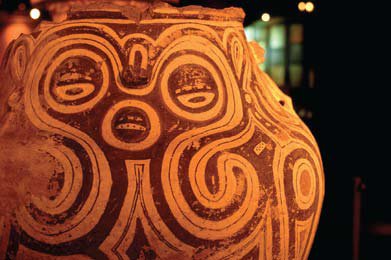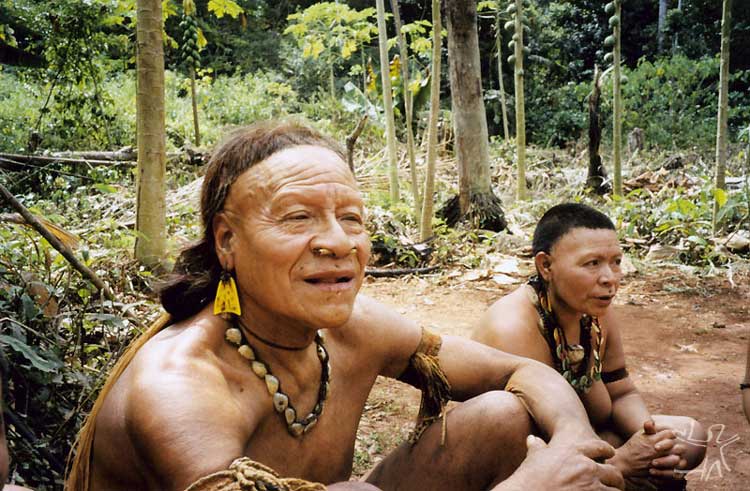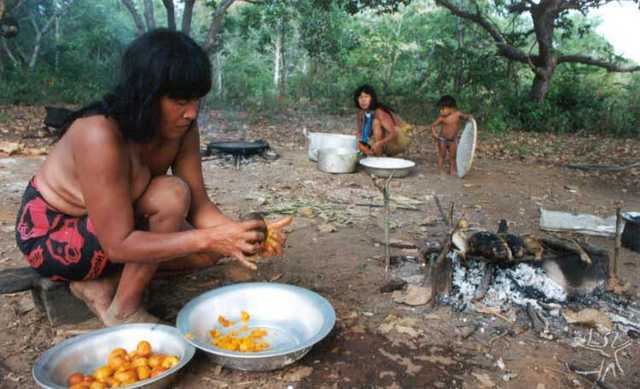One theory is that the first human beings arrived via the Bering Strait. Studies in archaeology suggest that groups of people, accompanied by herds of mammoth (a kind of elephant now extinct), crossed the Bering Strait. And this was how the Americas first came to be populated.
What is archaeology?
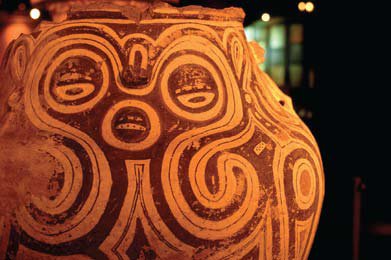
Archaeology is the study of human life in the past, based on the remains left behind. The aim of archaeology is to understand the way that peoples lived in the past. Archaeological study can focus on any moment in human history, from ancient times when human beings first lived, to periods much closer to the present day.
Where is the Bering Strait?

The Bering Strait is an area of sea between Siberia, in Asia, and Alaska, in North America. Roughly 12 thousand years ago, the sea was completely frozen. This formed a bridge between the two continents. The migrating peoples who occupied the Americas would have first travelled to the high plains of North America. From there they would have journeyed south, and gone on to spread throughout the two continents.
What were the first inhabitants of the Americas like?
- They were hunter-gatherers. This means they lived by hunting animals and collecting plants. They had many different physical characteristics. Among them were individuals who seem to have been from a Mongoloid race. Others had oriental features. There were even some with characteristics of the peoples who lived in Africa and Australia. The indigenous peoples alive in the Americas today are descended from peoples with oriental features.
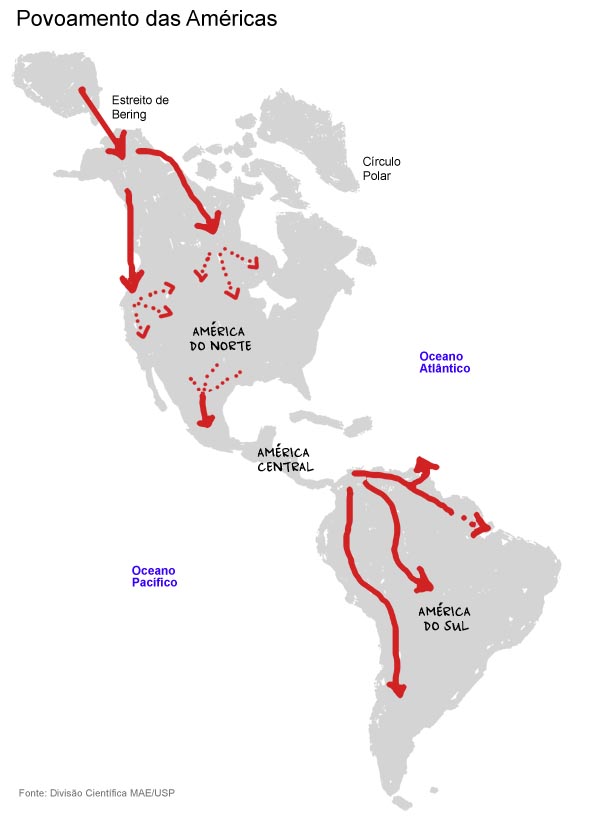
Divisão científica MAE/USP. Elver Luiz Mayer (Laboratório de Estudos Evolutivos Humanos - IB/USP. What animals did these people hunt?
Among the animals they hunted were mastodons, horses, giant sloths, sabre-toothed tigers and giant armadillos. All of these were driven to extinction by hunting and the gradual rise in temperature which occurred at the end of what is called the Pleistocene Era. (The Pleistocene Era took place between 10 thousand and 4 million years ago.)
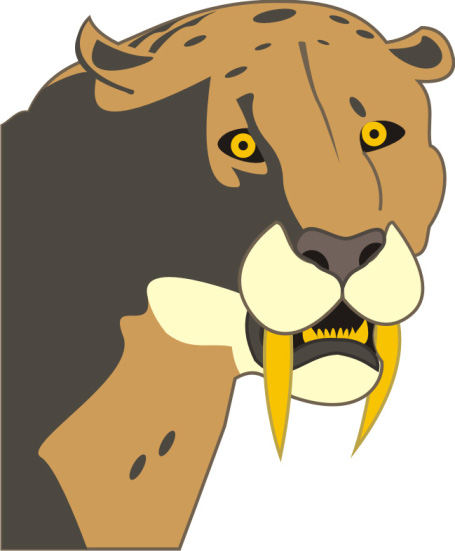
Illustration 8D - José Vitor Calfa. 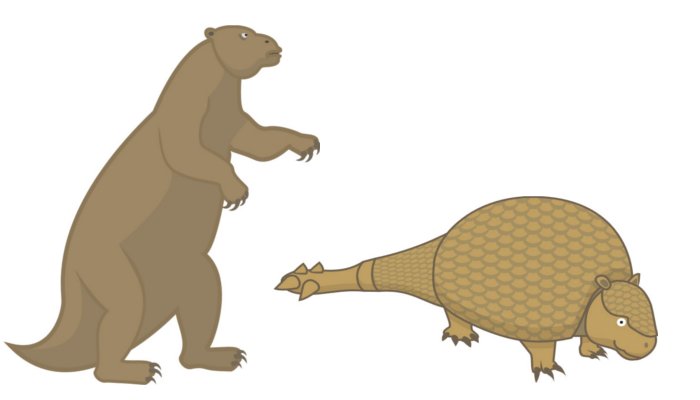
Illustration 8D - José Vitor Calfa. If these animals were driven to extinction, why are there horses in the Americas today? Horses were reintroduced by Europeans when they arrived in the Americas.
Do we know exactly how the human settlement of the Americas took place?
More or less. The problem is that archaeological remains found in recent decades suggest that human beings inhabited the Americas long before any migrations across the Bering Strait. So migrations across the Bering Strait did not bring the very first human settlers to the Americas?Possibly not. According to some experts, other migrations had already taken place, around 50 thousand years ago. These may have been via the Bering Strait. They may have involved other forms of travel, such as boats. It is possible that humans back then knew how to navigate.
When exactly did the first humans settle in the Americas?
There are doubts about the exact date of the first migrations to the Americas. This is because new archaeological discoveries are constantly come to light, and they change our understanding of how the Americas were populated. Is anything known for sure??
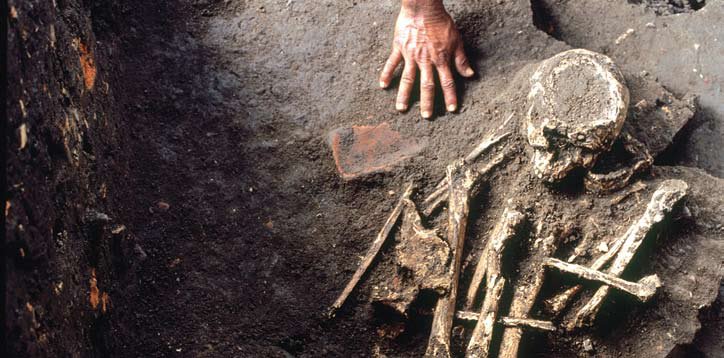
Maurício de Paiva/Entorno We know that about 10 thousand years ago, there were already humans living right across the America. This is based on firm archaeological evidence. We also know that, about 12 thousand years ago, some of what is now Brazil was occupied by groups of hunter-gatherers. How do we know this for sure? Because of archaeological signs left behind by these settlers. These include objects which people had used to survive, such as sharpened stone instruments, scrapers and arrow-heads. It is possible that other tools were made from wood or animal teeth. These would have rotted over the years. They would have left no traces. The remains that do exist are known as the material culture of these people.
What does material culture mean?
Material culture means any object or feature, with a form and a use that was left behind by humans in the past. This may mean artefacts such as ceramic pots, or stone axe-heads. It may mean marks left on the landscape, such as walls, tracks or paths used for growing crops. It is these objects and features of the landscape that archaeologists study.
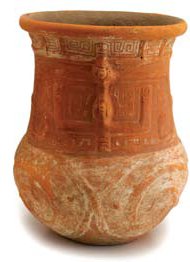
Wagner Souza e Silva (MAE/USP) 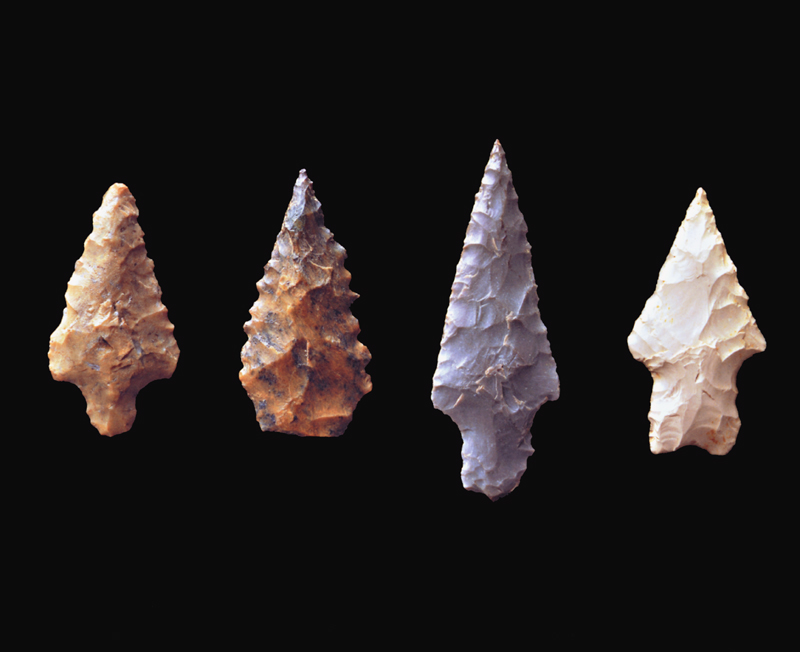
Wagner Souza e Silva (MAE/USP) Sources of information
- Museu de Arqueologia e Etnologia-MAE
Brasil 50 mil anos: Uma viagem ao passado pré-colonial (Guia temático para professores)
- Museu de Arqueologia e Etnologia-MAE
Programa de educação patrimonial do levantamento arqueológico do gasoduto coari-manaus (Guia temático)
- Eduardo Góes Neves
Os índios antes de Cabral: arqueologia e história indígena no Brasil, do livro A temática indígena na escola: novos subsídios para professores de 1° e 2° graus (1995). Websites


 Portugues
Portugues
 German
German
 Spanish
Spanish
 Norwegian Bokmål
Norwegian Bokmål
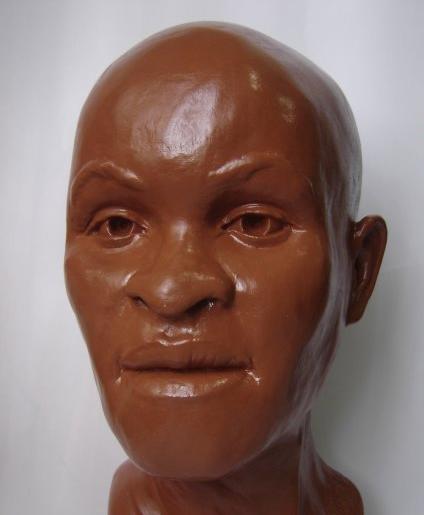
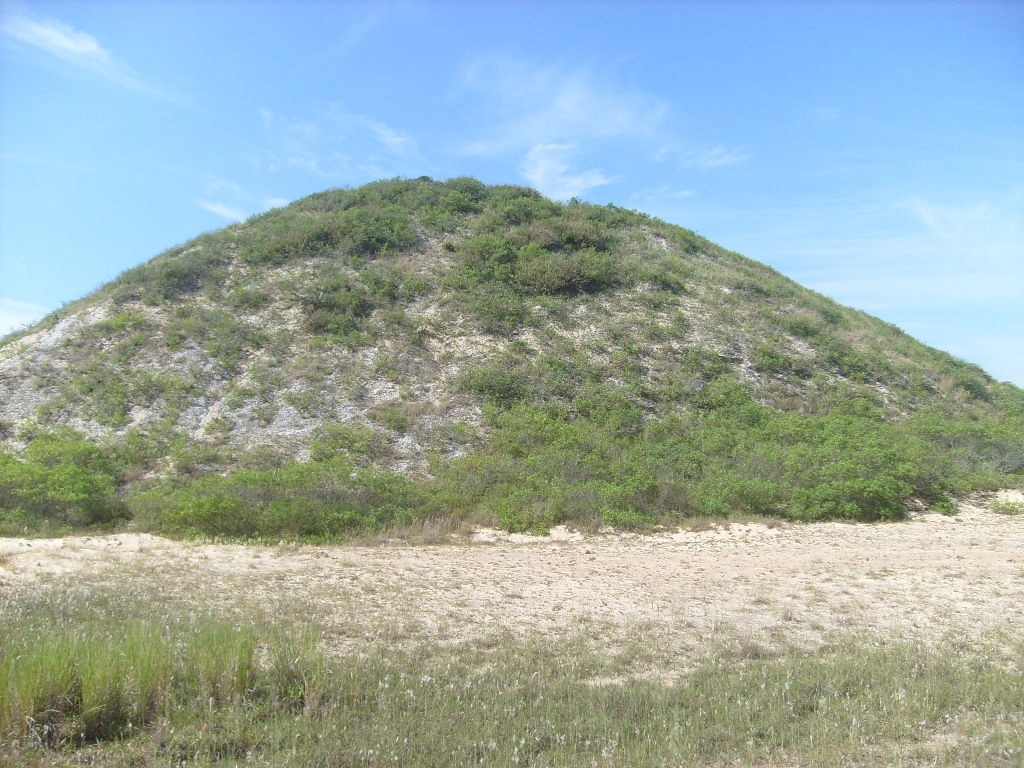 The occupation of Brazil
The occupation of Brazil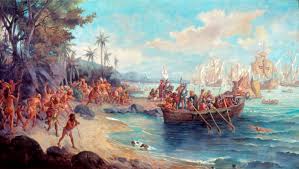 Before Cabral
Before Cabral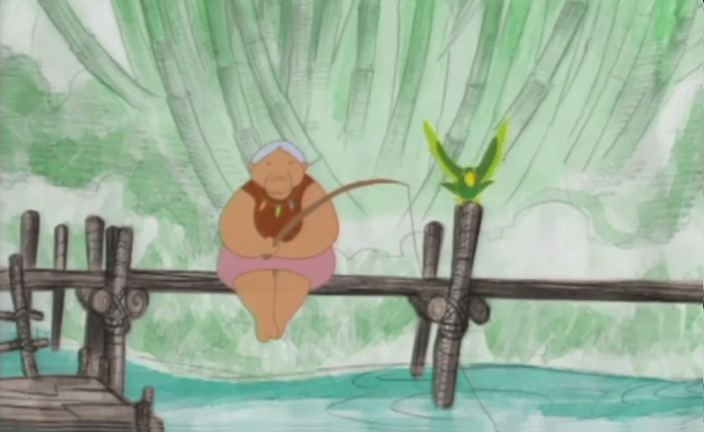 Ilya e o fogo
Ilya e o fogo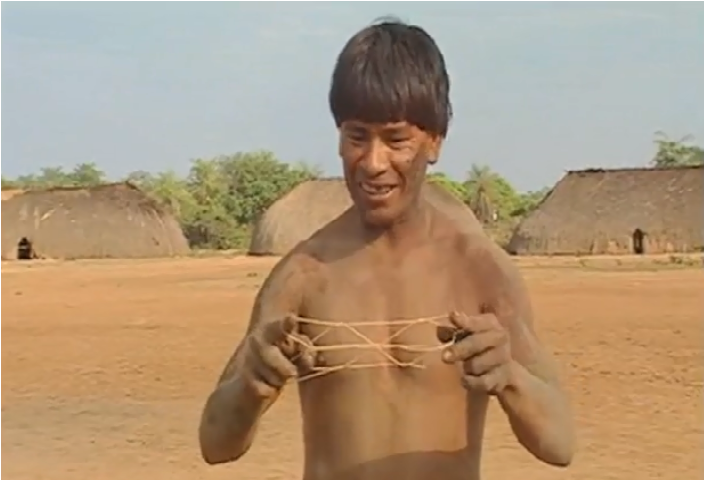 String figures: Ketinho Mitselü
String figures: Ketinho Mitselü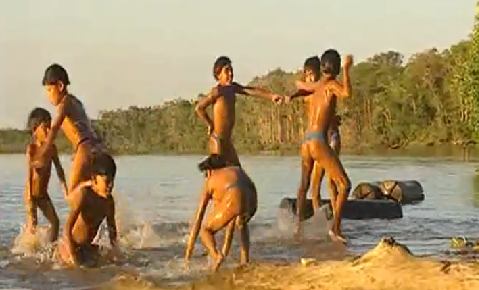 Toys and games of the Kalapalo: Ikidene
Toys and games of the Kalapalo: Ikidene